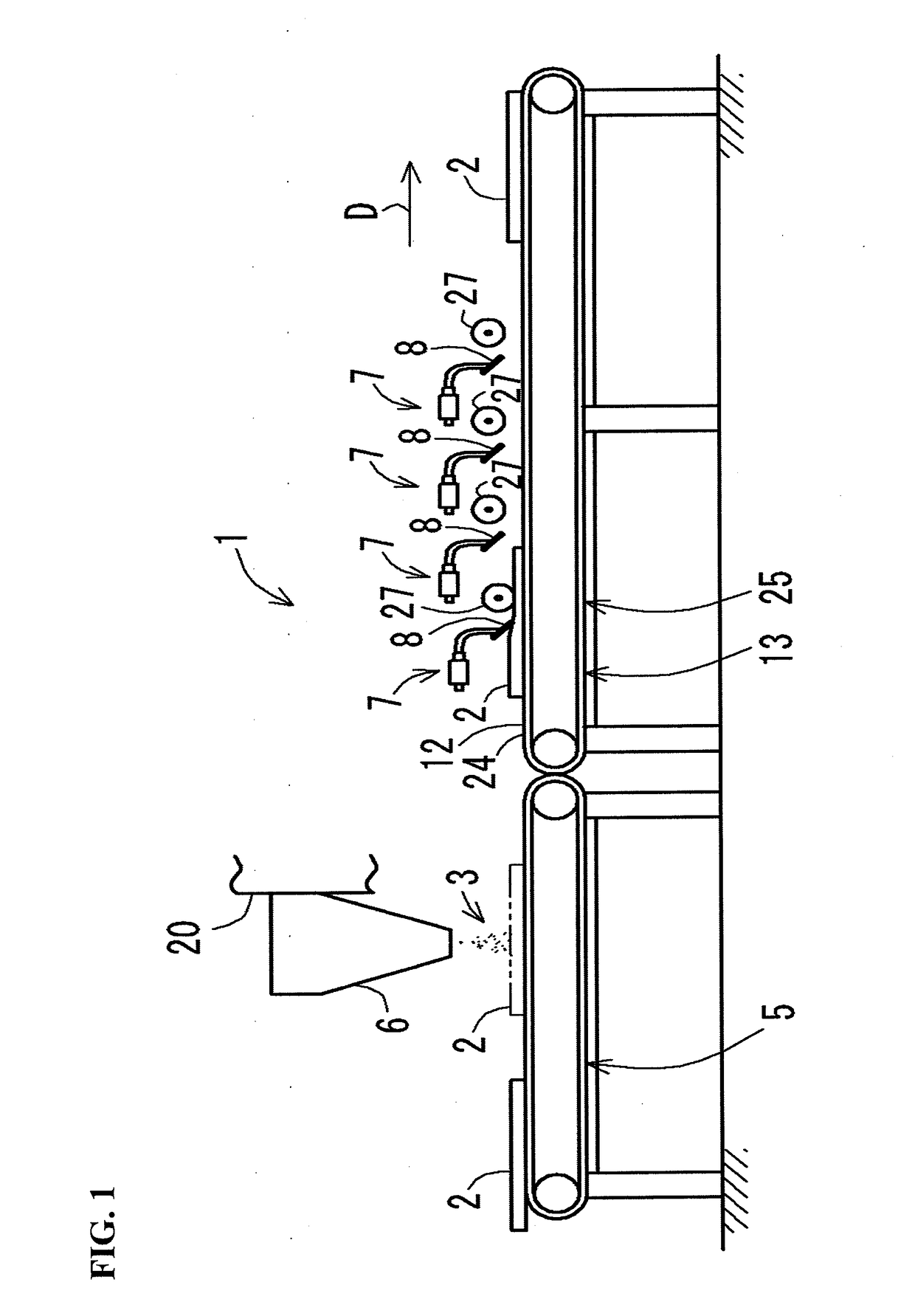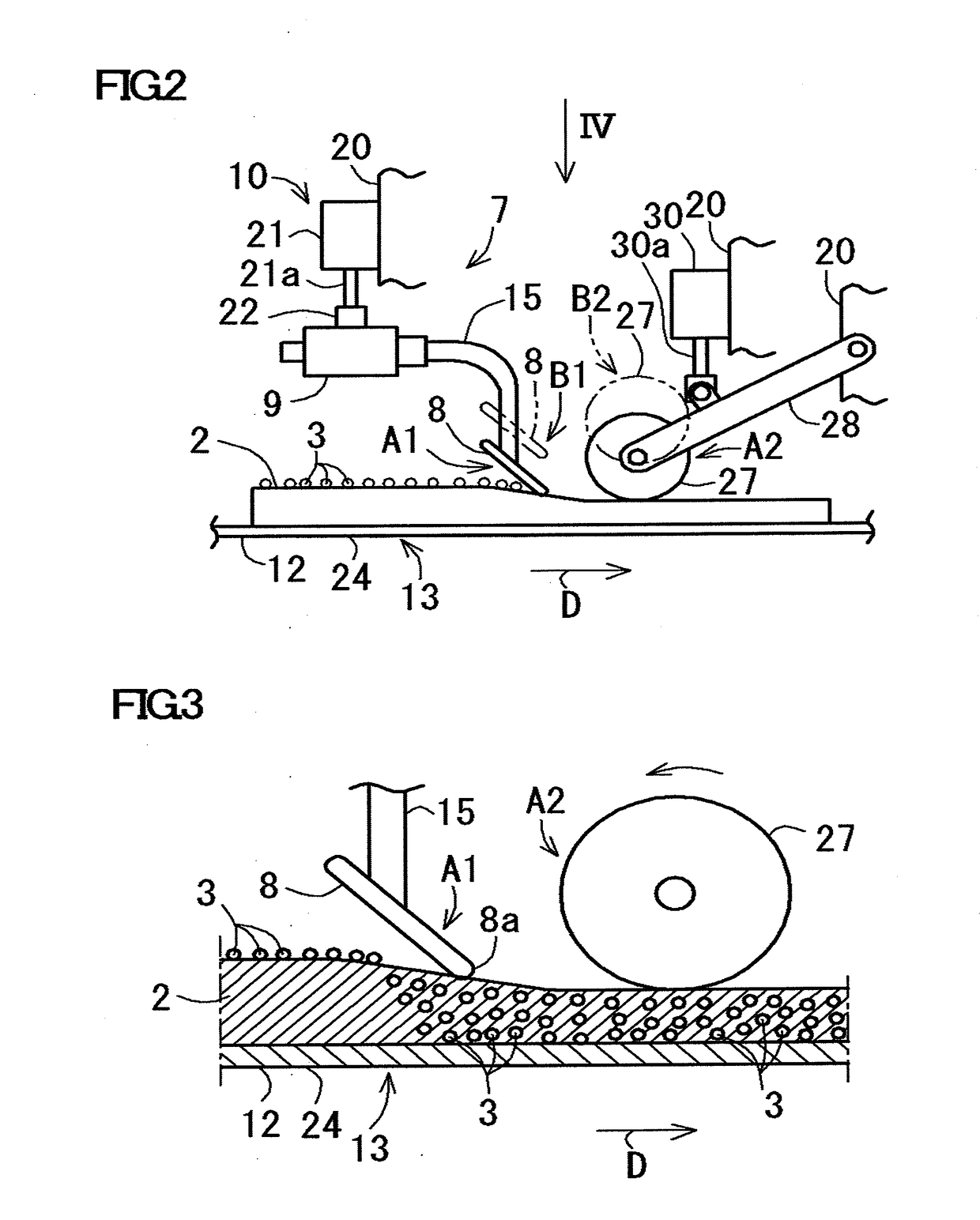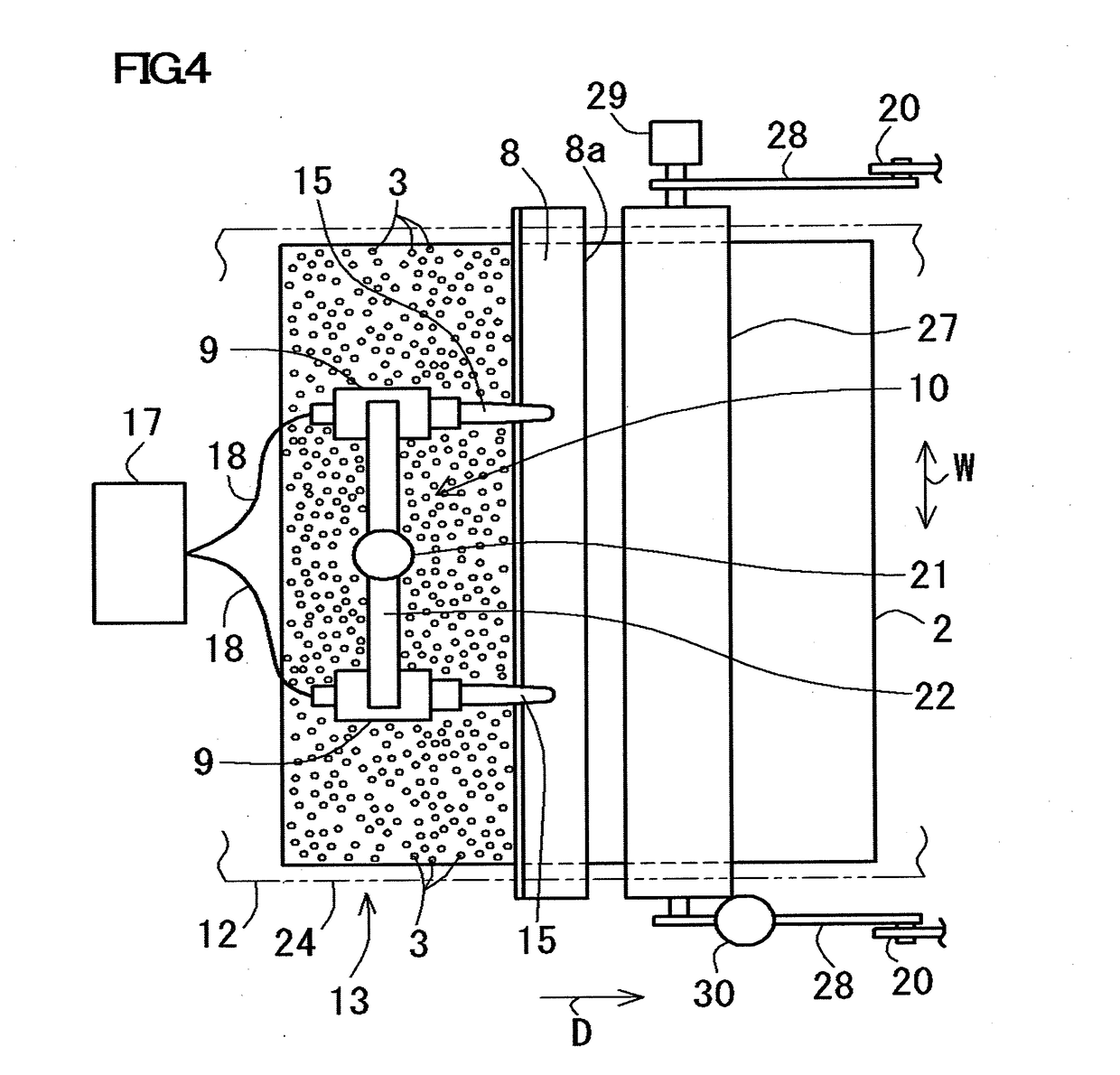Particle impregnating device
a technology of impregnating device and particle, which is applied in the direction of mechanical vibration separation, physical treatment, textile treatment carriers, etc., can solve the problems of increasing the size of the facility, and increasing the running cost of drying energy, so as to suppress the occurrence of differences in compression quantity and vibration propagation, and the effect of easy movemen
- Summary
- Abstract
- Description
- Claims
- Application Information
AI Technical Summary
Benefits of technology
Problems solved by technology
Method used
Image
Examples
examples
[0044]Hereinafter, the present invention will be explained in detail by way of Examples with reference to the drawings. In this Example, a nonwoven fabric 2 cut into a predetermined shape (for example, a flat rectangular shape) is indicated as an example of the “nonwoven fabric” according to the present invention (see FIG. 1).
(1) Construction of Particle Impregnating Device
[0045]A particle impregnating device 1 according to this Example includes a belt conveyor 5 for conveying the nonwoven fabric 2 and a well-known particle spraying machine 6 arranged above the belt conveyor 5, as shown in FIG. 1. This particle impregnating device 1 includes a plurality of (four in the figure) vibrating devices 7 arranged along a conveying direction D in which the nonwoven fabric 2 is conveyed. Each of these vibrating devices 7 includes a vibrating member 8, a vibrator 9 and a lifting mechanism 10 as will be described below. Further, the particle impregnating device 1 includes a placing body 12 for ...
PUM
| Property | Measurement | Unit |
|---|---|---|
| Shape | aaaaa | aaaaa |
Abstract
Description
Claims
Application Information
 Login to View More
Login to View More - R&D
- Intellectual Property
- Life Sciences
- Materials
- Tech Scout
- Unparalleled Data Quality
- Higher Quality Content
- 60% Fewer Hallucinations
Browse by: Latest US Patents, China's latest patents, Technical Efficacy Thesaurus, Application Domain, Technology Topic, Popular Technical Reports.
© 2025 PatSnap. All rights reserved.Legal|Privacy policy|Modern Slavery Act Transparency Statement|Sitemap|About US| Contact US: help@patsnap.com



